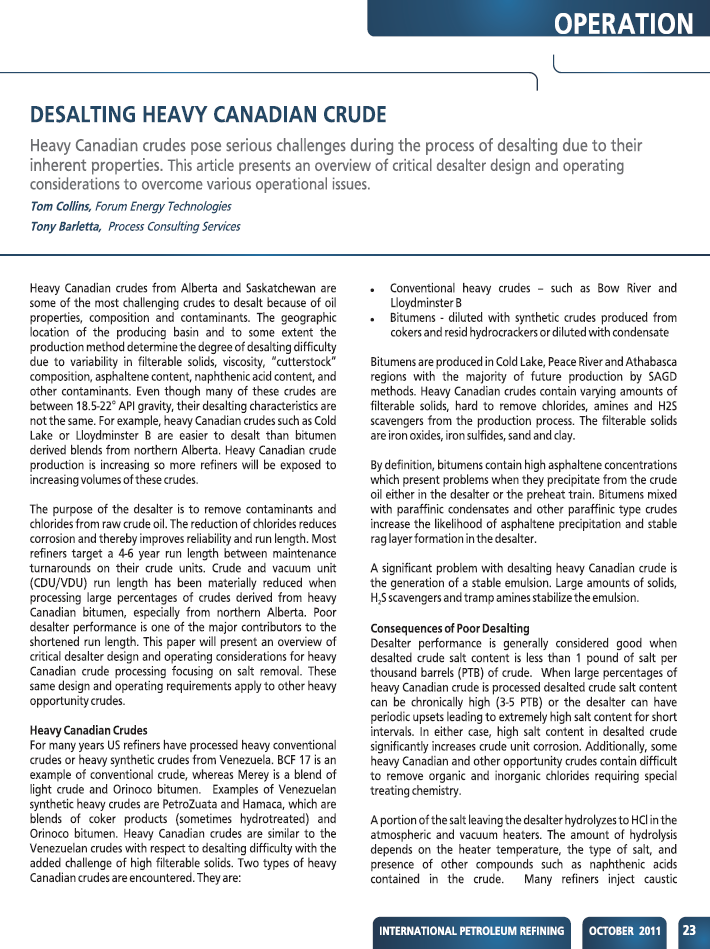Desalting Heavy Canadian Crude
SUMMARY
Heavy Canadian crudes pose serious challenges during the process of desalting due to their inherent properties. This article presents an overview of critical desalter design and operating considerations to overcome various operational issues.
TEXT
Heavy Canadian crudes from Alberta and Saskatchewan are some of the most challenging crudes to desalt because of oil properties, composition, and contaminants. The geographic location of the producing basin and to some extent the production method determine the degree of desalting difficulty due to variability in filterable solids, viscosity, "cutterstock" composition, asphaltene content, naphthenic acid content, and other contaminants. Even though many of these crudes are between 18.5-22 API gravity, their desalting characteristics are not the same. For example, heavy Canadian crudes such as Cold Lake or Lloydminster B are easier to desalt than bitmuen deriver blends from northern Alberta. Heavy Canadian crude production is increasing so more refiners will be exposed to increasing volumes of these crudes.
The purpose of the desalter is to remove contaminants and chlorides from raw crude oil. The reduction of chlorides reduces corrosion and thereby improves reliability and run length. Most refiners targe a 4-6 year run length between maintenance turnarounds on their crude units. Crude and vacuum unit (CDU/VDU) run length has been materially reduced when processing large percentages of crudes derived from heavy Canadian bitumn, especially from northern Alberta. Poor desalter performance is one of the major contributors to the shortened run length...

